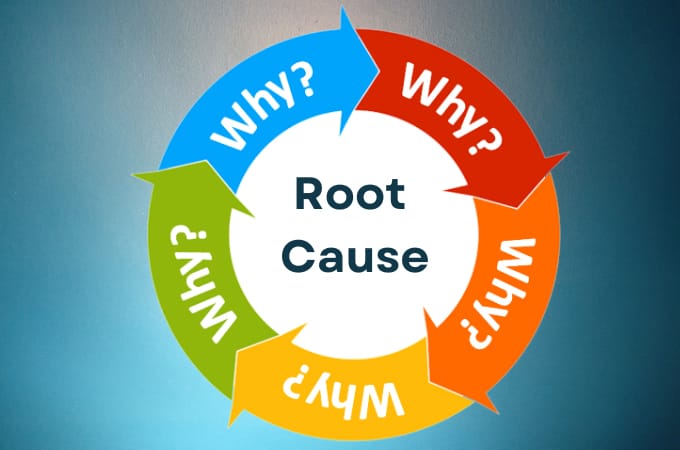Why-Why-Why Analysis: A Comprehensive Guide
As businesses grow and face new challenges, it becomes increasingly important to understand the root cause of issues. This is where the Why-Why-Why analysis comes in – it is a structured approach to identifying the underlying causes of a problem. In this article, we will discuss what the Why-Why-Why analysis is, how to perform it, and its benefits.
What is a Why-Why-Why Analysis?
The Why-Why-Why analysis is a technique used to identify the underlying cause of a problem. It involves asking a series of ‘why’ questions to get to the root cause of an issue. By doing this, we can uncover the underlying cause of a problem, rather than just treating the symptoms.
How to Perform a Why-Why-Why Analysis?
Performing a Why-Why-Why analysis is a simple yet effective process. Here are the steps:
Step 1: Define the Problem
The first step in a Why-Why-Why analysis is to clearly define the problem. This involves identifying the symptoms of the problem and understanding how it is affecting the business.
Step 2: Ask “Why?”
The next step is to ask ‘why’ the problem is occurring. It is important to ask ‘why’ multiple times to get to the root cause of the problem. This is where the name ‘Why-Why-Why’ analysis comes from.
Step 3: Identify the Root Cause
Once you have asked ‘why’ multiple times, you should be able to identify the root cause of the problem. This is the underlying reason why the problem is occurring.
Step 4: Develop a Solution
The final step is to develop a solution to address the root cause of the problem. This may involve implementing changes to processes, procedures, or systems.
Benefits of a Why-Why-Why Analysis
Performing a Why-Why-Why analysis offers many benefits. Here are some of the main advantages:
Improved Problem Solving
By identifying the root cause of a problem, you can develop a more effective solution. This leads to improved problem-solving skills and better outcomes for the business.
More Efficient Processes
Identifying the root cause of a problem can help you streamline processes and eliminate unnecessary steps. This can lead to more efficient operations and cost savings for the business.
Better Decision Making
By understanding the underlying causes of a problem, you can make better decisions. This is because you have a clearer understanding of the situation and can develop more effective solutions.
Conclusion
In conclusion, the Why-Why-Why analysis is a powerful tool for identifying the root cause of a problem. By asking ‘why’ multiple times, we can uncover the underlying reasons why an issue is occurring. This leads to improved problem-solving skills, more efficient processes, and better decision-making abilities. Incorporating this technique into your problem-solving toolkit can help your business grow and succeed.
FAQs
- Q. What is the difference between a Why-Why-Why analysis and a Five Whys analysis?
- A. A Why-Why-Why analysis is a more in-depth version of the Five Whys analysis. It involves asking ‘why’ multiple times to get to the root cause of a problem.
- Q. What are some common challenges when performing a Why-Why-Why analysis?
- A. Some common challenges include a lack of data or information, difficulty in identifying the root cause, and resistance to change.
- Q. Can a Why-Why-Why analysis be used for non-business-related issues?
- A. Yes, the Why-Why-Why analysis can be used to identify the root cause of any problem, whether it is related to business or not.
- Q. Is the Why-Why-Why analysis a one-time process?
- A. No
